Enrichment
Enrichment forms a big part of any animals wellfare and at Woodside we do our best to make sure this is part of the care we provide.
Enrichment ideas
There are many ways in which the lives of our pets can be enriched. Sometimes our normal routines are disrupted due to illness of us or our pet, work or family commitments. For any animal in Woodside’s care, enrichment is a important part of their day for their mental wellbeing. We hope that by showing our ideas it will help you to help enrich the lives of your pets.
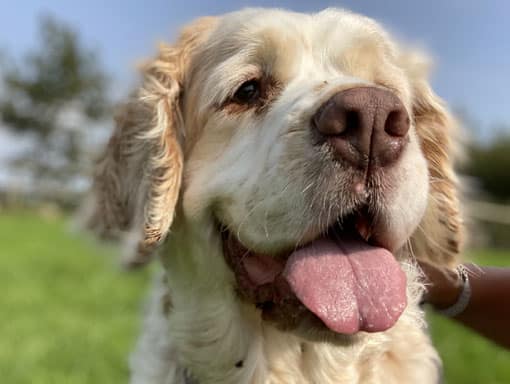
Dogs
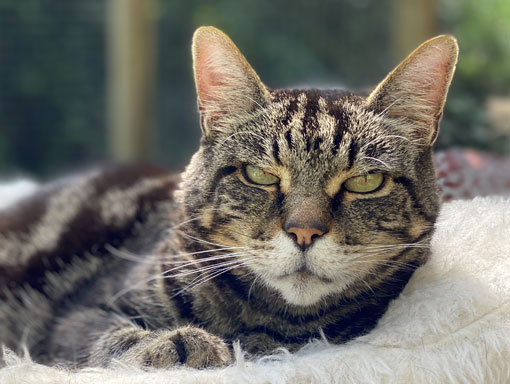
Cats
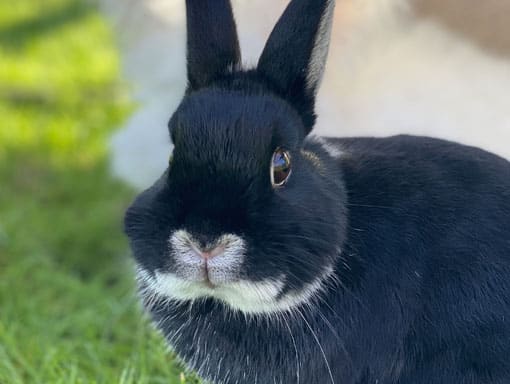
Rabbits & Guinea Pigs
Dogs
Stimulating a dogs brain through games is vital, especially if you have a dog who cannot have a lot of physical exercise. They have huge benefits of building confidence, teaching them play by themselves as well as preventing boredom and frustration which can then cause problems due to bad habits forming.
The majority of enrichment ideas will involve food and this should always be taken out of their daily feed allowance to prevent over feeding occurring. It doesn’t have to cost a lot, in fact many of the ideas we will suggest won’t cost a penny but will just require some different thinking. As well as the ideas we list we would also encourage you to join dog enrichment or brain games for dogs on social media sites such as Facebook and look at other animal rescues websites. Not every activity will be suitable for every dog and it is important that you as a owner decide what would be suitable. Please note that we would also always recommend that your dog is monitored when doing any brain enrichment activity and not left with anything that could cause them harm if eaten.
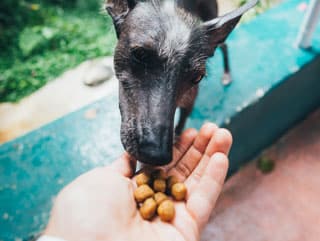
Instead of feeding your dog in a bowl – scatter the food on the floor to encourage your dog to for-age. To start with do this on a hard floor which is easy to clean but as your dog becomes confident then you can make it harder. Try scattering in the garden, in grass or hide around the home. Your dog will use its natural sense of smell to forage. When hiding around the home, do so in piles, in areas that you are happy for your dog to forage in and where there are no dangers. To begin with you may need to guide your dog to provide some help.
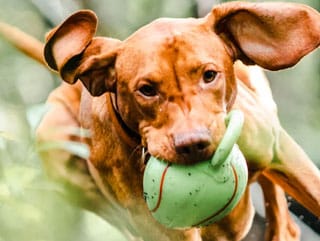
Kongs and stuffing toys — Kongs are a strong rubber shaped toy which can be filled with food or dog friendly paste and then the dog will work to get the food out. They are available in different sizes and can be made more easy or difficult depend-ing on what your dog requires. Dry biscuits will fall out easy and roll out onto the floor as the dog rolls or drops the Kong on the floor. When the Kongs are stuffed more tightly with soaked dry food, tinned or sticky food it becomes more harder and the dog will really have to work hard.

There are mats which are available to purchase called Snuffle Mats. These come in various sizes and are made up of long pieces of material which are tied and webbed through a mat. Food is hidden within the mat and the dog then forages to find the food.
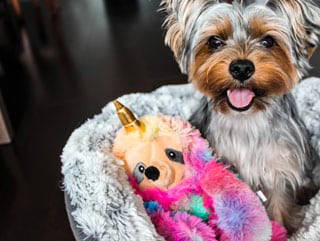
Scatter food in a box which is filled items such as toilet rolls, scrunched up paper and dog toys. Again this will encourage your dog to use its natural senses to find its food. Ensure the box is only filled with items that won’t cause harm if destroyed.
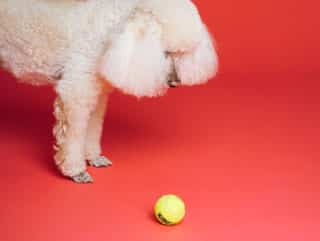
If you have a bun tin and some tennis balls, hide treats in the bun tin and cover with a tennis ball. To start with you can add treats in all the holes but if you would like to make it more difficult only put in some holes. Your dog will need to remove the balls to find the treat underneath.
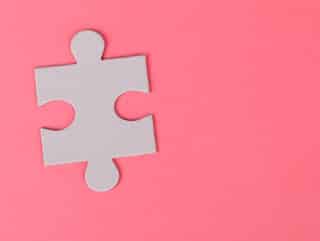
Puzzle feeders— there are many different puzzles available to purchase. The dog will be fed using one of these instead of its normal bowls. It will require the dog to put some brain work and skill into getting the food. These are not only good for enrichment but also benefit those dogs who tend to bolt their food very quickly.
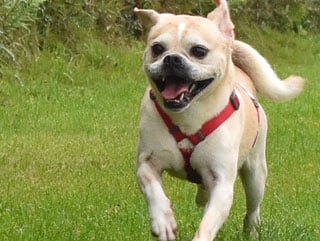
Brain Games—There are a huge variety of brain games that are available to buy which will require your dog to work out a skill that rewards him with a treat. They can be fun for dogs but may also require your help to prevent your dog becoming frustrated. However it is possible to create the same kind of puzzle from household items.

Instead of feeding your dog in a bowl – scatter the food on the floor to encourage your dog to for-age. To start with do this on a hard floor which is easy to clean but as your dog becomes confident then you can make it harder. Try scattering in the garden, in grass or hide around the home. Your dog will use its natural sense of smell to forage. When hiding around the home, do so in piles, in areas that you are happy for your dog to forage in and where there are no dangers. To begin with you may need to guide your dog to provide some help.

Kongs and stuffing toys — Kongs are a strong rubber shaped toy which can be filled with food or dog friendly paste and then the dog will work to get the food out. They are available in different sizes and can be made more easy or difficult depend-ing on what your dog requires. Dry biscuits will fall out easy and roll out onto the floor as the dog rolls or drops the Kong on the floor. When the Kongs are stuffed more tightly with soaked dry food, tinned or sticky food it becomes more harder and the dog will really have to work hard.

Puzzle feeders— there are many different puzzles available to purchase. The dog will be fed using one of these instead of its normal bowls. It will require the dog to put some brain work and skill into getting the food. These are not only good for enrichment but also benefit those dogs who tend to bolt their food very quickly.

There are mats which are available to purchase called Snuffle Mats. These come in various sizes and are made up of long pieces of material which are tied and webbed through a mat. Food is hidden within the mat and the dog then forages to find the food.

Scatter food in a box which is filled items such as toilet rolls, scrunched up paper and dog toys. Again this will encourage your dog to use its natural senses to find its food. Ensure the box is only filled with items that won’t cause harm if destroyed.

If you have a bun tin and some tennis balls, hide treats in the bun tin and cover with a tennis ball. To start with you can add treats in all the holes but if you would like to make it more difficult only put in some holes. Your dog will need to remove the balls to find the treat underneath.

Brain Games—There are a huge variety of brain games that are available to buy which will require your dog to work out a skill that rewards him with a treat. They can be fun for dogs but may also require your help to prevent your dog becoming frustrated. However it is possible to create the same kind of puzzle from household items.
Cats
Just like dogs, cats are very food focused and enjoy enrichment activities. If your cat regularly goes out-side then they are likely to find their own enrichment fun but if you have a indoor, older or a cat who maybe having to stay inside then it is important to provide activities to help keep your cat active and mentally well.
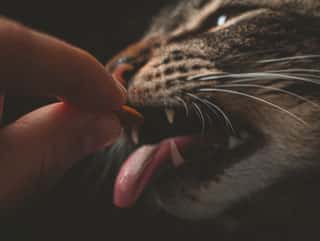
Scatter dry food instead of feeding in bowl to encourage natural foraging behaviour. As your cat gets used to this you can then start to hide food in small piles around the home to encourage the cat to hunt for their food.
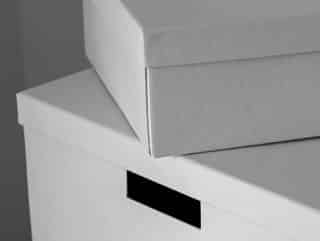
Use a small box (a empty shoe box is perfect) and fill with toilet rolls and then scatter dry food and let your cat investigate and work to get the food out. The box can be placed on different sides to add variation. You can also make feeding puzzles from many house hold items – the internet has thousands of ideas if you need some help.
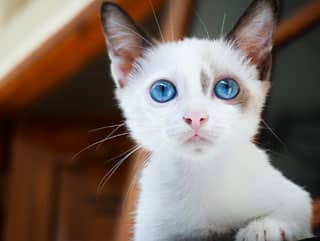
If your cat is unable to sit on a window sill then consider providing a bed that can attach onto the glass. This will allow your cat to watch the nature outside and provides great visual enrichment.
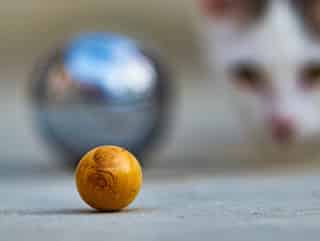
Food balls or Kongs— place some of your cats normal food allowance inside a treat ball and encourage your cat to play with the ball to release food. Some balls are adjustable so can be made easy to start with and then harder as your cat gets the hang of it. Kongs are a small rubber toy with a hollow inside that can be stuffed with dry, wet or sticky food and then given to your cat. As with the balls start easy by using dry food as it is important that the cat understands and doesn’t become frustrated. Then move on to soaking dry food or using wet food to pack the kong tightly so that the food doesn’t come out easily.
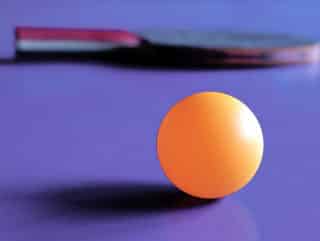
If your cat likes water try filling a bowl and putting in a couple of table tennis balls. It is important to monitor your cat to ensure the bowls aren’t tipped over. There are also battery operated fish you can buy for cats, which you can also place in the bowl.
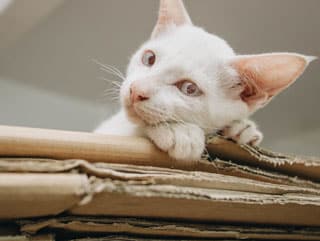
We all know that if there is a empty box no matter how small, your cat will do its best to fit inside. Think about making a climbing castle or play pen by putting boxes together or cutting holes in the boxes. You cats will spend hours investigating and having fun!
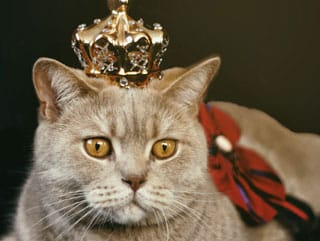
Food Maze – There are many types of food mazes or puzzle feeders that can be used to make meal times more interesting and to engage the brain. We have a variety that are used for the cats at Woodside but we also make our own.
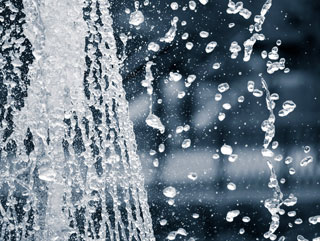
Water fountains provide a great way for cats to access fresh drinking water. These are especially good for cats that don’t drink a lot or for ones with urinary and kidney conditions.
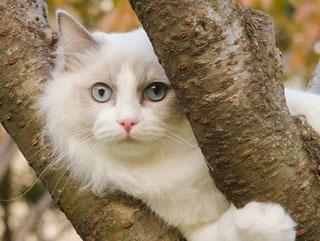
Climbing Trees—Cats are naturally climbers so activity trees are a great indoor activity for them as well as providing a suitable area to scratch on. There are so many available to buy depending on your budget.

Scatter dry food instead of feeding in bowl to encourage natural foraging behaviour. As your cat gets used to this you can then start to hide food in small piles around the home to encourage the cat to hunt for their food.

Use a small box (a empty shoe box is perfect) and fill with toilet rolls and then scatter dry food and let your cat investigate and work to get the food out. The box can be placed on different sides to add variation. You can also make feeding puzzles from many house hold items – the internet has thousands of ideas if you need some help.

If your cat is unable to sit on a window sill then consider providing a bed that can attach onto the glass. This will allow your cat to watch the nature outside and provides great visual enrichment.

Food Maze – There are many types of food mazes or puzzle feeders that can be used to make meal times more interesting and to engage the brain. We have a variety that are used for the cats at Woodside but we also make our own.

Climbing Trees—Cats are naturally climbers so activity trees are a great indoor activity for them as well as providing a suitable area to scratch on. There are so many available to buy depending on your budget.

Food balls or Kongs— place some of your cats normal food allowance inside a treat ball and encourage your cat to play with the ball to release food. Some balls are adjustable so can be made easy to start with and then harder as your cat gets the hang of it. Kongs are a small rubber toy with a hollow inside that can be stuffed with dry, wet or sticky food and then given to your cat. As with the balls start easy by using dry food as it is important that the cat understands and doesn’t become frustrated. Then move on to soaking dry food or using wet food to pack the kong tightly so that the food doesn’t come out easily.

If your cat likes water try filling a bowl and putting in a couple of table tennis balls. It is important to monitor your cat to ensure the bowls aren’t tipped over. There are also battery operated fish you can buy for cats, which you can also place in the bowl.

We all know that if there is a empty box no matter how small, your cat will do its best to fit inside. Think about making a climbing castle or play pen by putting boxes together or cutting holes in the boxes. You cats will spend hours investigating and having fun!

Water fountains provide a great way for cats to access fresh drinking water. These are especially good for cats that don’t drink a lot or for ones with urinary and kidney conditions.
Rabbits and Guinea Pigs
Rabbits are naturally inquisitive animals and love to explore anything new. It is extremely easy to im-prove a rabbits well being without having to spend lots of money. Below is some examples that we have found to be a success.
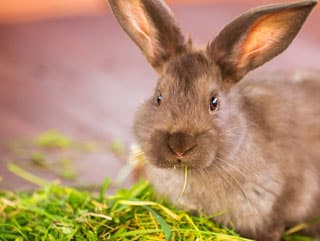
Instead of feeding your rabbit or guinea pig in a bowl instead spread the daily food allowance around the pen or in a litter tray with hay. This will encourage the natural foraging instinct and make it more fun.
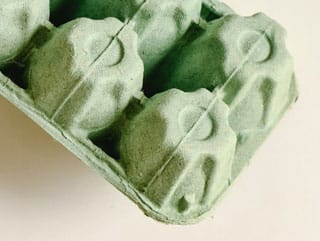
Egg boxes with tasty treats inside will encourage rabbits to use their brain to work out how to open the box and find the treat.
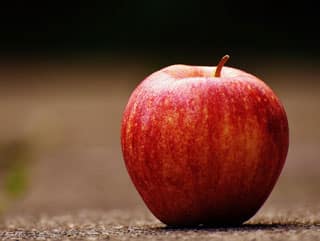
Dangle willow, apple or pear twigs from the roof in bundles or thread them through mesh along the rabbits runs. This again will encourage foraging as well as helping to wear down teeth.
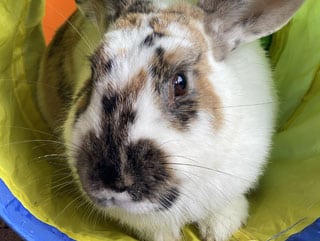
Tunnels and tubes are a huge hit with the rabbits and guinea pigs we care for at Woodside. They impli-cate underground tunnels and rabbits will enjoy running through them or resting in them.
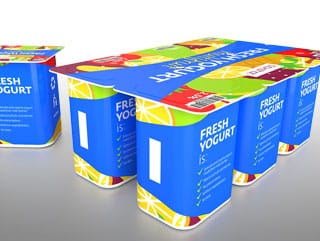
Place a tasty treat in a clean yoghurt pot and stack another pot on top. This will mean that you rabbit or guinea pig will have to work to separate the two pots to find the treat. Once this has been mastered you use bigger pots. At Woodside we have even used plant pots and have watched as the bunnies enjoy throwing the pots around.
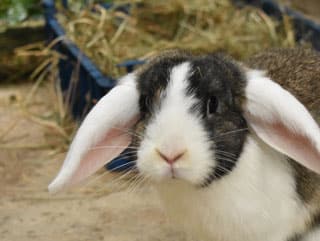
Flower pots filled with hay and their favourite treat such as dried herbs or leaves.
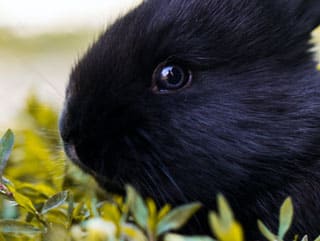
Fill a treat ball with some tasty treats and encourage the rabbit to move the ball around to get the treats.
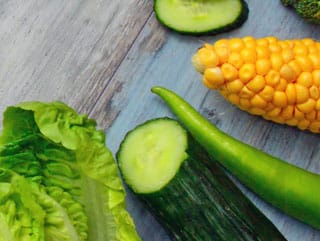
Make a home made vegetable kebab by using a willow stick or toilet roll. If using a wil-low twig simply push suitable vegetables onto the twig. If you use a toilet roll, make slits in the roll that you can push vegetables through. You can then fill the toilet roll with hay and dry herbs or more vegetables and then fold the ends in so that they are closed.
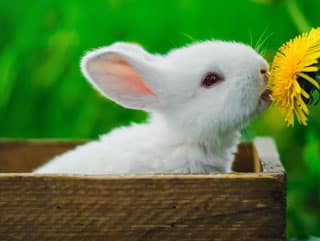
Rabbits and guinea pigs enjoy digging and this is a strong, natural instinct. Think about adding a dig-ging tray such as a tyre, children’s paddling pool (Not inflatable), large litter tray filled with soil. This will provide a natural way of wearing nails down.
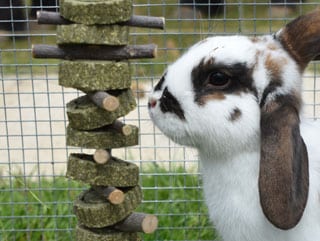
Add different levels to you rabbits enclosure. By nature rabbits enjoy sitting on different levels so it is important to allow a rabbit to explore different heights safely. Ramps can be added onto children tables or chairs. You don’t need to go to high though, remember the safety must come first. This is not recomended for guinea pigs.

Instead of feeding your rabbit or guinea pig in a bowl instead spread the daily food allowance around the pen or in a litter tray with hay. This will encourage the natural foraging instinct and make it more fun.

Make a home made vegetable kebab by using a willow stick or toilet roll. If using a wil-low twig simply push suitable vegetables onto the twig. If you use a toilet roll, make slits in the roll that you can push vegetables through. You can then fill the toilet roll with hay and dry herbs or more vegetables and then fold the ends in so that they are closed.

Egg boxes with tasty treats inside will encourage rabbits to use their brain to work out how to open the box and find the treat.

Dangle willow, apple or pear twigs from the roof in bundles or thread them through mesh along the rabbits runs. This again will encourage foraging as well as helping to wear down teeth.

Tunnels and tubes are a huge hit with the rabbits and guinea pigs we care for at Woodside. They impli-cate underground tunnels and rabbits will enjoy running through them or resting in them.

Place a tasty treat in a clean yoghurt pot and stack another pot on top. This will mean that you rabbit or guinea pig will have to work to separate the two pots to find the treat. Once this has been mastered you use bigger pots. At Woodside we have even used plant pots and have watched as the bunnies enjoy throwing the pots around.

Flower pots filled with hay and their favourite treat such as dried herbs or leaves.

Fill a treat ball with some tasty treats and encourage the rabbit to move the ball around to get the treats.

Rabbits and guinea pigs enjoy digging and this is a strong, natural instinct. Think about adding a dig-ging tray such as a tyre, children’s paddling pool (Not inflatable), large litter tray filled with soil. This will provide a natural way of wearing nails down.

Add different levels to you rabbits enclosure. By nature rabbits enjoy sitting on different levels so it is important to allow a rabbit to explore different heights safely. Ramps can be added onto children tables or chairs. You don’t need to go to high though, remember the safety must come first. This is not recomended for guinea pigs.

